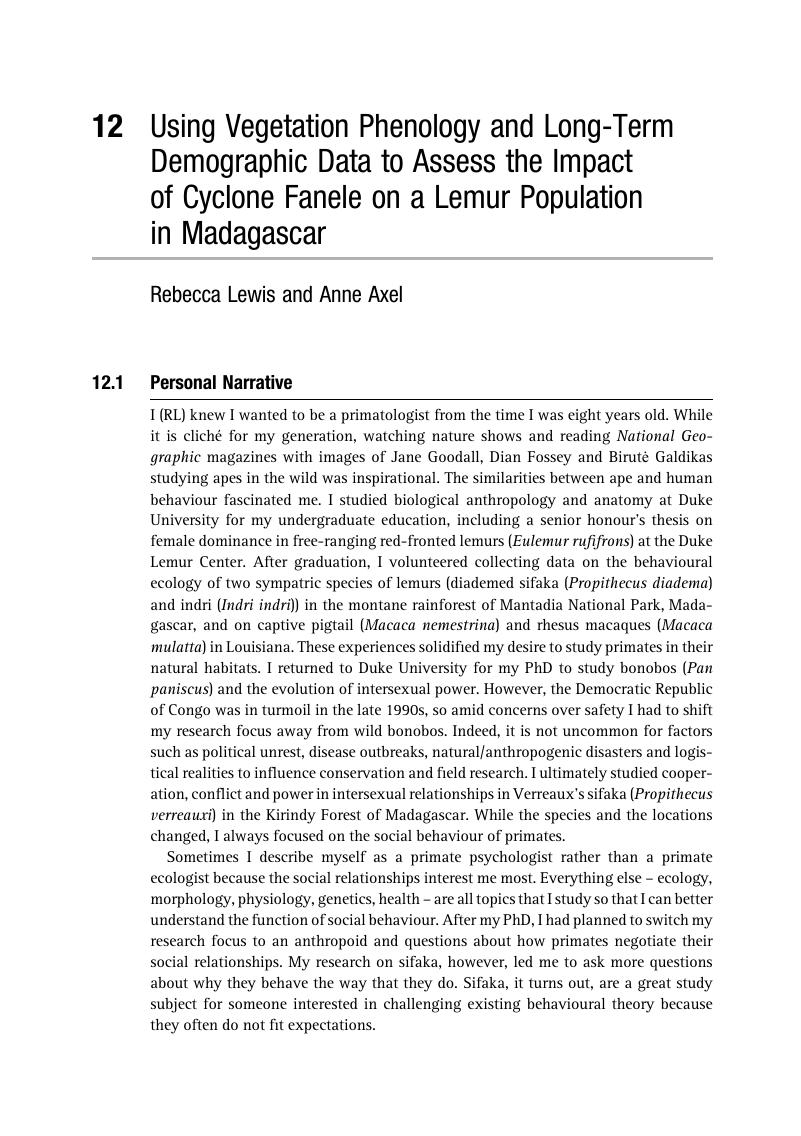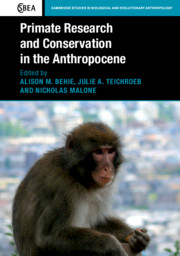Book contents
- Primate Research and Conservation in the Anthropocene
- Cambridge Studies in Biological and Evolutionary Anthropology
- Primate Research and Conservation in the Anthropocene
- Copyright page
- Dedication
- Contents
- Contributors
- Foreword
- 1 Changing Priorities for Primate Conservation and Research in the Anthropocene
- Part I The Human–Non-human Primate Interface
- Part II Habitat Alteration in the Anthropocene
- Part III Climate Change in the Anthropocene
- 11 The Effects of Humans on the Primate Nutritional Landscape
- 12 Using Vegetation Phenology and Long-Term Demographic Data to Assess the Impact of Cyclone Fanele on a Lemur Population in Madagascar
- 13 Alas the Storm Has Come Again!
- 14 The Effect of Climate Change on the Distribution of the Genera Colobus and Cercopithecus
- 15 Research(ers) and Conservation(ists) in the Anthropocene
- Index
- References
12 - Using Vegetation Phenology and Long-Term Demographic Data to Assess the Impact of Cyclone Fanele on a Lemur Population in Madagascar
from Part III - Climate Change in the Anthropocene
Published online by Cambridge University Press: 25 January 2019
- Primate Research and Conservation in the Anthropocene
- Cambridge Studies in Biological and Evolutionary Anthropology
- Primate Research and Conservation in the Anthropocene
- Copyright page
- Dedication
- Contents
- Contributors
- Foreword
- 1 Changing Priorities for Primate Conservation and Research in the Anthropocene
- Part I The Human–Non-human Primate Interface
- Part II Habitat Alteration in the Anthropocene
- Part III Climate Change in the Anthropocene
- 11 The Effects of Humans on the Primate Nutritional Landscape
- 12 Using Vegetation Phenology and Long-Term Demographic Data to Assess the Impact of Cyclone Fanele on a Lemur Population in Madagascar
- 13 Alas the Storm Has Come Again!
- 14 The Effect of Climate Change on the Distribution of the Genera Colobus and Cercopithecus
- 15 Research(ers) and Conservation(ists) in the Anthropocene
- Index
- References
Summary

- Type
- Chapter
- Information
- Primate Research and Conservation in the Anthropocene , pp. 216 - 236Publisher: Cambridge University PressPrint publication year: 2019
References
- 4
- Cited by

